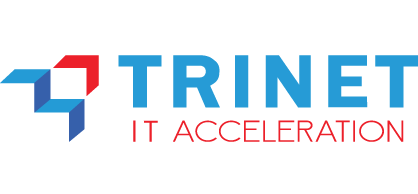Tech Innovation > Security > Privileged Access Management (PAM)

Privileged Access Management (PAM)
In the digital world, privileged accounts are prime targets for cyberattacks. These accounts have elevated control over IT systems, sensitive data, and critical applications. Without proper access management, organizations face increased risks of data breaches, insider threats, and credential theft.
📌 Privileged Access Management (PAM) is a security solution designed to control, secure, and monitor access to privileged accounts within an organization. It ensures that access to critical systems is restricted to authorized users and closely monitored to prevent unauthorized activity.
Without PAM, companies face the following challenges:
Uncontrolled Access → Administrators & Third-Party Vendors Can Access Systems Without Clear Boundaries
Administrators and vendors may access critical systems without clear limitations, increasing security risks.
Credential Theft Attacks → Hackers Exploit Weak or Stolen Credentials to Gain Access to Critical Systems
Cyber attackers can exploit weak or stolen credentials to breach critical systems, compromising security.
Insider Threats → Employees or Partners with Privileged Access May Misuse Their Permissions
Employees or partners with high-level access may intentionally or unintentionally misuse their privileges, leading to data loss or breaches.
Regulatory Non-Compliance → Failure to Manage Access Leads to Violations of Security Standards like ISO 27001, GDPR, PCI DSS, POJK 38, and PDP Laws
Failing to properly manage access control can result in violations of critical security standards and regulations, risking legal and financial penalties.

Key Features & Capabilities
Privileged Access Management (PAM) offers features to ensure secure control and monitoring of privileged accounts.
Show Details
a. Just-In-Time (JIT) Access Management
- Reduce Abuse Risk: Provide temporary access only when needed, minimizing long-term access that could be exploited by attackers.
- Eliminate Static Access: Remove static, long-term access that could be exploited by malicious actors.
b. Multi-Factor Authentication (MFA) for Privileged Users
- Extra Layer of Security: Ensure an additional layer of security before privileged users can access critical systems.
- Biometric, Token, OTP, or Push Authentication: Use various authentication methods such as biometrics, tokens, OTPs, or push notifications for privileged users.
c. Session Monitoring & Recording
- Real-Time Session Recording: Record every user session accessing sensitive systems for investigation and auditing purposes.
- Video Playback of Admin & External Vendor Activities: Provide video playback of actions taken by administrators and external vendors for full visibility.
d. Password Vaulting & Rotation
- Encrypted Credential Storage: Secure account credentials by storing them in an encrypted vault.
- Automatic Password Rotation: Perform automatic password rotation to prevent exploitation of old credentials.
e. Least Privilege Enforcement
- Access Control Based on Zero Trust: Limit user access according to Zero Trust principles and Least Privilege Access (LPA) to minimize unnecessary permissions.
- Command Execution & Remote Access Control: Control administrative command executions and remote access to sensitive systems.
f. Integration with SIEM & Threat Analytics
- Detect Suspicious Activity: Identify suspicious activity from privileged users with real-time detection.
- SIEM Integration for Deep Analysis: Integrate with Security Information and Event Management (SIEM) for in-depth threat analysis and monitoring.

Business Benefits
Privileged Access Management (PAM) ensures secure access and monitoring of privileged accounts.
Show Details
a. Securing Privilege Account Access & Preventing Abuse
- Reducing the risk of cyber attacks by limiting access to only authorized users.
- Implementing the Zero Trust principle – Never trust, always verify before granting access.
b. Improving Operational Efficiency & AI-Based Security
- Automate access control & auditing so that the IT team does not need to perform manual checks.
- AI-driven monitoring ensuring that anomalies are detected within seconds, not days.
c. Reducing the Risk of Fines & Regulatory Violations
- Comply with global safety standards such as ISO 27001, GDPR, PCI DSS, and the Personal Data Protection Act (PDP Act).
- Avoid potential financial losses due to data leaks or insider threats attacks.
d. Simplifying Credential Management & Ensuring Compliance
- Provide complete audit trail for forensic investigations in the event of a security incident.
- Reducing the complexity of privileged account management with agentless & agent-based solutions cloud ready.

Use Cases
Privileged Access Management (PAM) provides effective solutions for securing privileged accounts across industries.
Show Details
a. Banking & Finance
- Control access to core banking systems, ATMs, and online financial transactions.
- Ensure compliance with banking regulations and prevent internal fraud.
b. Health Services
- Protect access to Electronic Medical Records (EMR) and Hospital Information Systems (HIS).
- Restrict access for doctors, nurses, and IT staff to only relevant data.
c. Government & Critical Infrastructure
- Prevent leakage of sensitive national data with strict authentication for system administrators.
- Control access to critical systems such as e-government platforms and population data.
d. Manufacturing & Supply Chain
- Protect industrial automation systems and IoT from unauthorized access.
- Limit access for technicians, external vendors, and third parties to only the necessary systems.

How It Works
How Privileged Access Management and Security Controls Work to Protect Sensitive Accounts:
Show Details
a. User Request Access
-
Privileged users request access through the PAM system.
b. Approval & Authentication
-
The system performs Multi-Factor Authentication (MFA) before granting access.
c. Session Monitoring & Logging
-
All user activities are recorded and analyzed.
d. Automated Password Rotation
-
After the session ends, the password is automatically updated to prevent reuse.
e. Threat Detection & Incident Response
-
If suspicious activity is detected, the system automatically triggers an alert or terminates the session.
Contact our experts for further information












